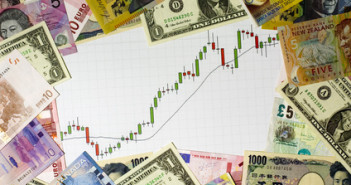The buying enthusiasm for North American equities dissipated yesterday, after a rather uneventful day in terms of news flow left stocks to chop in a tight range before closing modestly lower. While the rally for equities may have taken pause, the demand for bonds showed now signs of slowing down, with buying momentum sending the 10-year US treasury yield past strong support to trade down to 2.43%. A combination of a low inflation expectations and relative value compared to other developed bond markets signals asset managers’ insatiable appetite for US fixed income may not be satisfied just yet, even with the market well aware the Fed is on course to being to raise rates around the middle of next year.
The overnight Asian session was not able to spark a turnaround in equities after the soft close on Wall Street, as the Nikkei ended the day flat as a result of Japanese retail sales for April falling off a cliff.  Although it was widely expected to see some give back after the pre-tax front-running in March, the 4.4% decline on a y/o/y basis was over a full percentage point lower than what analysts had estimated heading into the number, and questions Shinzo Abe and the Bank of Japan’s confidence that the economy will be able to absorb the tax hike relatively unscathed. The size of the contraction in GDP over Q2 will be an important factor on influencing the BoJ’s decision on if their asset purchases program is an optimal size or if it has room to expand later this year, but for now the weak retail sales print has done little to weaken the Yen, with USDJPY trading in the mid-101s.
European trade has been relatively thin given German and French banks are observing Ascension Day and thus volume as been lower than usual this morning. That being said, both the EUR and GBP have managed to find some support against the big dollar on a short-covering bounce that has left the DXY weak and sliding back toward its 200-day moving average.  After cratering through trend-line support yesterday and giving up nearly 2% this month, Cable has managed to find somewhat of a bid tone this morning, propped up by the notion that dissension within the ranks on Threadneedle Street might be intensifying.  Monetary Policy Committee members Weale and Bean are beginning to get more vocal about the status of the British economy, and while they don’t advise an immediate rate hike is necessary, do argue there is less spare capacity in the UK economy than the head of the Bank of England, Mr. Carney, is letting on. GBPUSD has managed to fend off a capitulation through the 1.67 handle for the time being, but will most likely need to see some follow-through buying interest to dissuade the bears to put more pressure on the pair.
Heading into the North American open, all eyes were focused on the second estimate of Q1 GDP growth for the American economy, which ended up being revised lower to a 1.0% contraction, worse than the 0.5% decrease analysts had been forecasting, and a stark contrast to the first estimate of 0.1% growth.  The de-stocking of inventories were the big weight on the reading this morning, coming in with a lower revision than the initial report, yet should bode well for the economy in Q2 as businesses look to build back up to previous levels. In addition, consumption expenditures came in slightly better than the advanced estimate, increasing by 3.1% over the quarter as households remained optimistic about economic prospects. So even though the headline number was worse than expected, there are parts of the report where silver linings can be found, and thus we’ve seen a muted reaction in FX markets were the DXY and bond yields are largely unchanged.
S&P futures are pivoting around the UNCH mark ahead of the opening bell in North America, while the Loonie refuses to cede ground and pushes USDCAD back into it’s comfortable range in the mid-1.08s. Loonie buying interest perked up during the overnight session after the Aussie went on a run due to more optimistic prospects for business investment throughout the remainder of the year, and helped push up the commodity-currency bloc on a correlation flow basis. The underlying bid tone in the Loonie was also reinforced by a smaller current account deficit for Q1 than had been expected, with Canada posting its first trade surplus in more than two years. The consequence of the better than expected current account data was fairly muted, as exported growth had been previously well documented over the month of February, and the big takeaway from the report is that this performance in the export sector will have to be sustained before the overall outlook for the Loonie changes.
On the docket for the remainder of the session, Pending Home Sales for the month of April in the US is set to drop at 10:00EST, and expected to show a slight increase of 1.0% on a m/o/m basis. The health of the housing industry for the beginning of Q2 has so far been a mixed bag, with Existing Home Sales exhibiting a slight bounce from the March lows but still at lower levels than had been expected, while New Home sales topped forecasts and managed to get back to levels we were accustom to seeing at the end of 2013.  Make sure to speak to your dealing teams heading into the release, as the performance of the housing industry will most likely play a large part in how consumer demand holds up in Q2, and thus will have an impact on the major currency pairs as a result.
Further reading:
Q1 GDP growth
USDCAD



